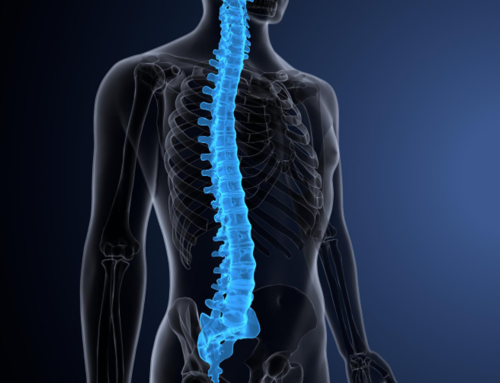It can be terrifying to notice that your arms, back, or legs are tingling and numb all of a sudden. Numbness and tingling are commonly symptoms of one of several spinal conditions, and they are usually accompanied by varying degrees of back pain. This combined effect of tingling and numbness in the spine can cause pain in the neck, back, arm, or leg, making daily tasks difficult and preventing your quality of life from reaching its full potential. You may feel hopeless and unsure of how to deal with these issues if you don’t know what’s causing your spine tingling and numbness. The list of spinal conditions in this blog post may help you determine what is causing you to end up losing sensation or experience unsettling tingling.
Sciatica
The sciatic nerve is the body’s longest nerve. It begins in the lumbar region of the spine and travels through your buttocks, across the back of your leg, as well as through your foot to the big toe. These nerves are found on both sides of your body. The sciatic nerves are also the thickest, measuring about the thickness of your little finger. With the sciatic nerve’s wide reach and size, it’s no surprise that pain from an injury can be completely incapacitating. When the sciatic nerve is pressed or pinched by a disc herniation or a boney growth known as spinal stenosis, it causes serious shooting pains that are frequently accompanied by occasional numbness and a continuous feeling of weakness. This condition is known as radiculopathy or sciatica.
The sciatic nerve controls several muscles in your lower legs and also sensation to the skin on your feet. Sciatica is a complicated condition to treat because your signs can vary depending on where the nerve is pressed or irritated. You may experience burning down the right side of your lower leg or pain in your outer thighs. Tickling sensation in the legs is another common symptom. Everyone’s experience is different.
The good news is that sciatic nerve pain is commonly treatable without surgery, right inside your own home. These three methods can help reduce sciatica symptoms in as little as three months:
- Exercising and stretching
- Compresses, both hot and cold
- Anti-inflammatory medication sold over-the-counter
If conservative therapies and physical therapy fail to relieve your sciatica, you may need to see the best spine surgeon in India.
Pinched nerves
Sciatica is categorized as a separate condition since the sciatic nerve is so huge and impacts such a large part of the body. However, you can pinch a range of other nerves, causing pressure and tingling in the thighs, back, or arms. Spinal nerves must pass through narrow spaces in the vertebrae named foramen, where they can become constricted or pinched. The disc, ligament, or enclosing bony structure can all exert pressure and cause pain.
When a nerve is pinched, your body responds with an inflammatory reaction that you may notice in your neck or back muscles. The most common sign is tingling in the arms and back. It typically goes away in the early stages, but if not treated, it becomes much more persistent over time. A pinched nerve can cause the following symptoms:
- Numbness or lowered sensation in the nerve’s supply area.
- Sudden, burning, or aching pain.
- Pain that radiates from the affected area.
- Pins and needles
- Muscle exhaustion.
Pinched nerves that end up causing back pain with tingling in the hands or legs are generally triggered by a bulging or disc herniation. The pain related with a pinched nerve should be relieved by treating the underlying condition.
Herniated disc
Because your spine’s vertebrae are continuously bending and flexing, they need cushioning to soak up the force of our weight while remaining aligned and healthy. This requirement is met by slight round and flat discs. They have a hard outer layer known as the annulus and an inner layer known as the nucleus that helps absorb sensation between each vertebra.
When a disc herniates, a fragment from the nucleus is pressed through the annulus and into the spinal column. Herniated discs are generally caused by degenerative conditions caused by normal or distressing wear and tear on the disc. The herniation, which can be bulging or slipped, puts a lot of pressure on spinal nerves, causing potentially debilitating pain. Herniated discs are quite frequent in the lower back, in which the spine is under the most strain.
A herniated disc in the lumbar spine can cause lower back pain as well as tingling or numbness in one or both legs. Herniated discs in our neck can cause upper back, neck, and shoulder pain, as well as arm numbness and loss of strength that can extend to the hands. Back pain and tingling sensations in the hands can severely damage everyday tasks. Depending on where the disc is located, the pain may be severe enough to keep you from leaving your bed for extended periods of time. Simple actions such as an unforeseen sneeze or cough can cause back spasms or cramps.
Bulging disc
Injury to the spine can deteriorate the outermost layer of a disc. The smooth innermost layer of a disc can begin to bulge out through the tougher exterior of the disc when it is weakened. Many people have bulging discs and are unaware of it, but more extreme cases can result in herniated discs or essentially extreme pain.
A bulging disc compresses the spinal cord and departing nerves in the spine, causing pain. They can happen anywhere, but they’re most frequent in the lower back. This type of disc displacement is commonly associated with tingling senses in the lower back, and also in the legs and feet.
A bulging disc in the chest or cervical spine induces upper back pain, arm numbness, and arm tingling. If you move your neck at all, you may encounter sharp pain beneath your arm and hand, as well as stiffness or cramps in your neck and shoulders. Bulging discs are highly curable as a precursor to herniated discs with physiotherapy that lowers pressure in the area. If your bulging disc progresses to a hernia, you should seek the assistance of a spinal specialist.
Degenerative Disc Disease
Serious harm to one or more of one’s spinal discs causes this condition. This is an age-related condition that occurs when the discs wear out and can no longer carry out the necessary cushioning function as effectively as they once did. Degenerative disc disease is mostly caused by years of repetitive motions. Traumatic injury to the spine, on the other hand, can cause or worsen it.
The surface layer of the disc, known as the annulus, are the first to damage. If these layers damage, the spinal and exiting nerves may be exposed to the gentler inner layers of the disc. The fluid from the inner layers bothers nerve fibres and can cause pain instantly. The pain caused by annular tears is referred to as discogenic pain.
If the irritated fibres are located in the cervical vertebrae, you will experience pain and numbness in your shoulder, neck, and arms. Degenerative disc disorder in the lumbar region tends to affect the back, thighs, and hips, but rarely progresses beyond the knees. Tingling in the hands can be caused by lower back pain.
Many times, disc degeneration is mild enough that the patient’s quality of life is unaffected. In some cases, degenerative disc disease may progress to other spinal conditions that impair basic functioning. For example, a large enough annular tear can cause disk herniation. Interference in the form of stabilisation, fusion, or decompression surgery is required in some cases to reduce pain. It is recommended to consult the top spine surgeon in Bangalore to get the best treatment.
In Conclusion
Tingling sensation and numbness are uncomfortable regardless of where they happen in the body, but the only way to prevent a spinal condition from worsening is to seek right treatment. Only a medical professional can examine your condition and recommend treatment. If you try to treat yourself, you may make things worse. For example, you could try a thoracic herniated disc stretch and end up injuring yourself since you certainly have a pinched nerve in your lower spine. When tingling and numbness in the back or lower legs lasts more than a few days or worsens substantially, it’s time to consult a spinal care specialist.





Get Social